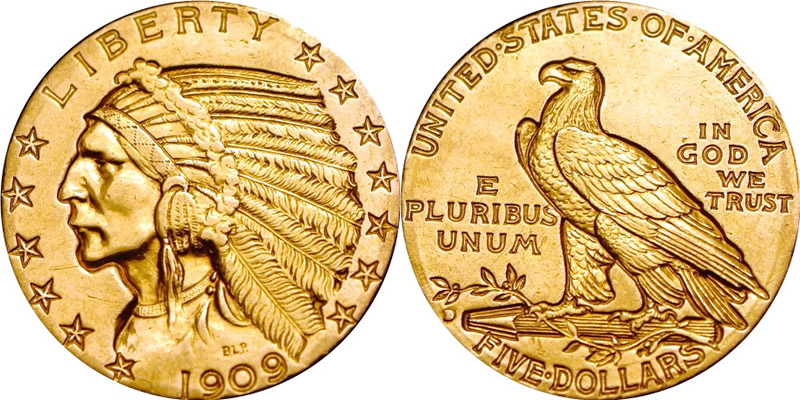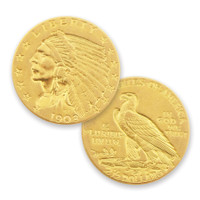What are incuse coins?
Posted by Toby Adkins, Numismatic Scholar for International Currency on Jun 15th 2017
Today's modern silver and gold coins are in some of the best conditions ever in the history of numismatics. Since almost every release is handled with more and more care and with modern technology that encapsulates our coinage, there has never been a better time to find near perfect or even perfect examples of many coins. Modern coin collector's soon learn that does not apply in antique silver and gold. Since antique coins were literally made to be used, their intention was to last as usable money as long as possible. Soon after the turn of 1900 our coinage would begin a radical change. One of those changes were coins made with incuse designs, read on for some insight into some of the most sought after antique coins in our Nation's history!

Time For a Change
When Theodore Roosevelt became President, he was determined to change the face of what he called our "atrociously hideous" coinage. Ultimately, Roosevelt would bring on two sculptors to navigate his coin renaissance, Augustus St. Gaudens and Bela Lyon Pratt. St. Gaudens designed the $10 Indian and $20 Double Eagle coins but after his passing Pratt would bring us his $2 1/2 and $5 Indian with their unique incuse design. So what is an incuse coin? The simple definition is the coin's design has been impressed BELOW the coin's surface.
It is a very pragmatic design. With the main features of the obverse and reverse being below the coin's surface, the features would not wear as quickly as your typical coin and it's raised surface. This is not to be taken lightly. The smaller denominated coins were used far more often than their larger denominated counterparts and this design was intended to make their circulating lifespan much longer. Like all great designs, the coins also faced great criticism. Soon after the release, some critics hailed the design as anti-naturalistic and even unhygienic because of it's incuse surface. The massive global flu outbreak in 1918 did not aid the coin and many collectors believe that fear of the flu in the coins design led to a high melt down of incuse coins when gold was recalled in 1933.
Today, the $2 1/2 and $5 Indians are highly prized by collectors. Not only for their unique incuse design but also for their short runs. There are just 15 different dates and mint marks for the $2 1/2 dollar gold and only 24 for the $5. However, assembling a full collection comes with great cost for some of the rare mint marks. For that reason, some collectors opt to complete a date set alone. Either way, these unique coins have not been made since and no other U.S. coin can boast to have a complete incuse design like the $2 1/2 and $5 Indians.
$2 1/2 Indians
Only 15 coins would be produced between the Philadelphia and Denver mints. Over the years, the popular $2 1/2 was often used in jewelry, taking even more coins from collector's hands.
1908 (P only)
1909 (P only)
1910 (P only)
1911 (P and D)
1912 (P only)
1913 (P only)
1914 (P and D)
1915 (P only)
1925 (D only)
1926 (P only)
1927 (P only)
1928 (P only)
1929 (P only)
$5 Indians
Like the $2 1/2 Indians, there is a big break in production, mostly due to WWI. The $5 Indians were struck in Denver, New Orleans, Philadelphia, and San Francisco.
1908 (P, D, and S)
1909 (P, D, O and S)
1910 (P, D, and S)
1911 (P, D, and S)
1912 (P and S)
1913 (P and S)
1914 (P, D, and S)
1915 (P and S)
1916 (S only)
1929 (P only)
I hope this short article helps explain some of the why's and where's of our Nation's exciting coin history. To find out more information or about availability, feel free to give us a call. Our knowledgeable representatives will be happy to answer your questions.
Happy collecting!

